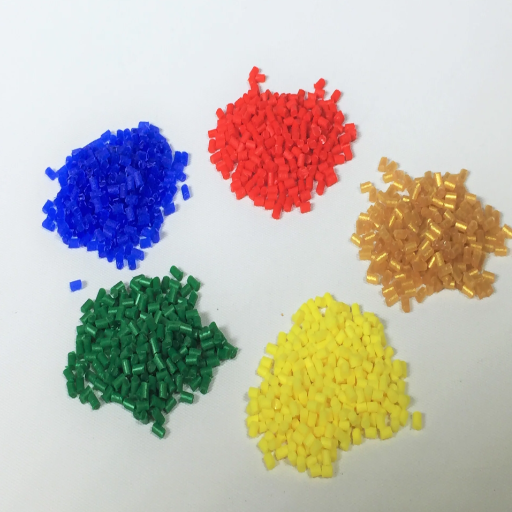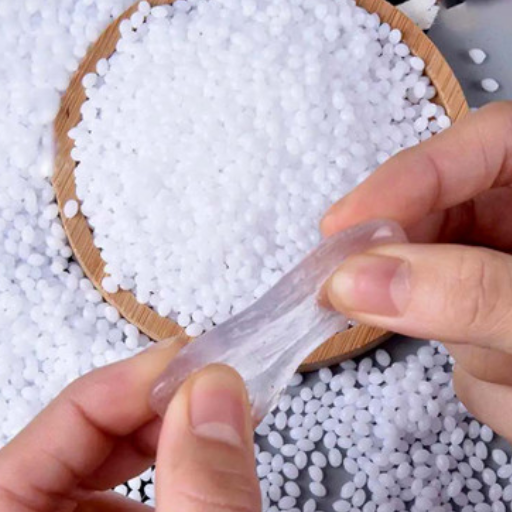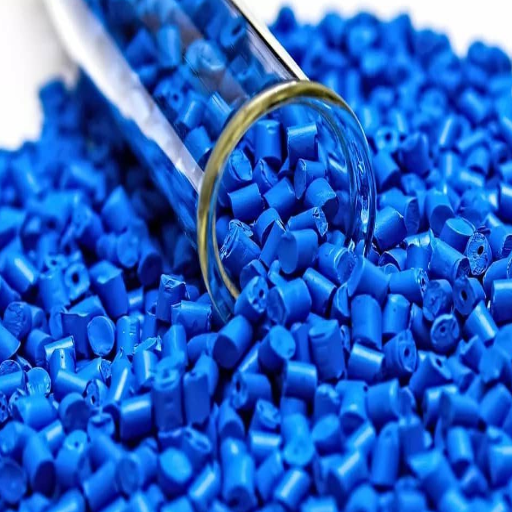Plastics are all around us, forming an indispensable part of modern life. From packaging materials and household items to medical devices and technological components, plastics are versatile and widely used. But have you ever wondered what plastics are actually made of and how they are created? This article dives deep into the fundamental composition of plastics, breaking down the chemical building blocks, the processes involved in their production, and their various types. By understanding the core materials and methods behind plastics, we can better grasp how they impact our lives and the environment, setting the stage for meaningful conversations about sustainability and innovation.
What Are the Raw Materials Used to Make Plastic?
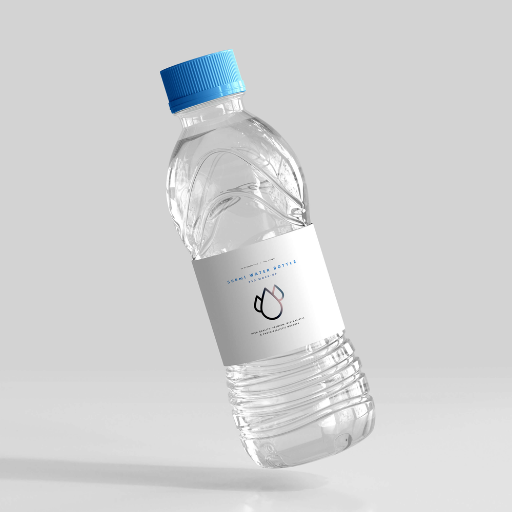
Plastics are primarily made from natural resources such as crude oil, natural gas, and, in some cases, renewable materials like corn or sugarcane. The base substances derived from these resources are hydrocarbons, which undergo processes such as polymerization or polycondensation to form long chains of molecules known as polymers. These polymers are the building blocks of different types of plastics, ranging from polyethylene and polypropylene to bioplastics made from plant-based materials. By utilizing such raw materials, plastics are tailored for various applications, offering versatility and durability across industries.
How Crude Oil and Natural Gas Are Transformed
The transformation of crude oil and natural gas into plastics begins with extraction and refinement. Crude oil is processed through fractional distillation, splitting it into various components like naphtha, a key raw material for plastics. Similarly, natural gas undergoes processing to isolate ethane and propane, which are critical feedstocks.
These raw materials are then subjected to cracking, a process that breaks down heavy hydrocarbons into simpler molecules like ethylene, propylene, and other monomers. Polymerization or polycondensation follows, where these monomers chemically bond to create long-chain polymers, forming the base of plastic materials. Advanced techniques allow manufacturers to engineer plastics with specific properties, ensuring adaptability across industries such as packaging, construction, and automotive. This streamlined process emphasizes efficiency while catering to diverse market demands.
The Role of Cellulose and Other Natural Materials
Cellulose, a key component of plant cell walls, plays a crucial role as a renewable resource in the production of sustainable materials. Extracted primarily from wood, cotton, and hemp, cellulose is widely utilized in creating biodegradable plastics, paper products, and textiles. Its molecular structure provides strength and flexibility, making it an environmentally friendly alternative to petroleum-based materials. Natural materials like cellulose, alongside starch and lignin, are increasingly integrated into industrial processes due to their low environmental impact and abundance. Innovations in bioengineering and material science are expanding their applications, contributing to a sustainable future by reducing reliance on non-renewable resources and minimizing waste.
Understanding Hydrocarbon and Monomer Contributions
Hydrocarbons and monomers play a pivotal role in modern material science and industry. Hydrocarbons, made up of hydrogen and carbon atoms, are foundational in the creation of fuels, plastics, and synthetic chemicals. These compounds are often derived from petroleum or natural gas and serve as a primary energy source globally. Monomers, on the other hand, are the building blocks of polymers, combining through chemical reactions to form materials like plastics, rubber, and fibers. By studying their properties and applications, we can better balance industrial needs with environmental concerns, exploring ways to innovate through sustainable practices and alternatives that reduce ecological impact.
How Is Plastic Made?

Plastic is made through a process called polymerization, where monomers—small molecules derived from sources like petroleum or natural gas—are chemically bonded to form long molecular chains known as polymers. There are two main types of polymerization: addition polymerization, where monomers add together without the loss of atoms, and condensation polymerization, where monomers combine with the release of small byproducts like water. The polymers are then processed into pellets or resins, which manufacturers shape into various products through methods like injection molding, extrusion, or blow molding. This process transforms raw materials into the versatile plastics used in countless applications worldwide.
The Process of Polymerization
Polymerization is the chemical process through which small molecular units called monomers bind together to form larger, more complex molecules known as polymers. This occurs primarily through two main methods:
Addition Polymerization: Monomers with double bonds (like ethene) add together in a chain reaction without losing any atoms. This process involves three stages—initiation, propagation, and termination—and is commonly employed to produce plastics like polyethylene and polystyrene.
Condensation Polymerization: Monomers react together with the release of byproducts such as water or methanol. This is typical in creating polymers like nylon or polyester.
After their formation, polymers are processed into usable forms, including pellets or resins. These materials are subsequently manufactured into everyday products using techniques like extrusion (forcing material through shaped dies), injection molding (filling molds with molten polymer), or blow molding (used for hollow items like bottles). The versatility of polymerization and these processing methods underscores its importance in industries ranging from packaging to automotive manufacturing and beyond.
Understanding Synthetic Polymer Production
Synthetic polymer production begins with polymerization, a chemical process where small molecules called monomers are chemically bonded to form long-chain molecules known as polymers. These polymers can be tailored by varying monomers and reaction conditions to create materials with specific properties, such as flexibility, durability, or resistance to heat. Once produced, polymers are typically shaped into usable forms like pellets or resins. These are then processed using methods such as extrusion for uniform profiles (like pipes), injection molding for precision parts (like casings), and blow molding for hollow items (like bottles). The adaptability of synthetic polymers drives their widespread use, from lightweight car parts to intricate medical devices, demonstrating their pivotal role in modern industries.
The Impact of Plastic Production on the Environment
Plastic production has a significant and far-reaching impact on the environment. First, the extraction and refinement of fossil fuels, such as oil and natural gas—primary materials in plastic production—result in considerable greenhouse gas emissions, contributing to climate change. Additionally, the manufacturing process itself releases harmful pollutants and consumes vast amounts of energy and water.
Once produced, plastics often end up in landfills or the environment due to inadequate waste management systems. Plastics take hundreds of years to degrade, and as they do, they break into microplastics, which contaminate soil, water, and air, posing risks to ecosystems and human health. Furthermore, marine environments bear a heavy burden, as millions of tons of plastic waste infiltrate oceans annually, endangering marine wildlife through ingestion or entanglement.
Efforts to mitigate these impacts include increasing recycling rates, developing biodegradable alternatives, and adopting a circular economy approach. However, addressing the environmental ramifications of plastic production requires a combination of industry innovation, governmental policy, and consumer behavior changes.
What Are the Different Types of Plastic and Their Uses?
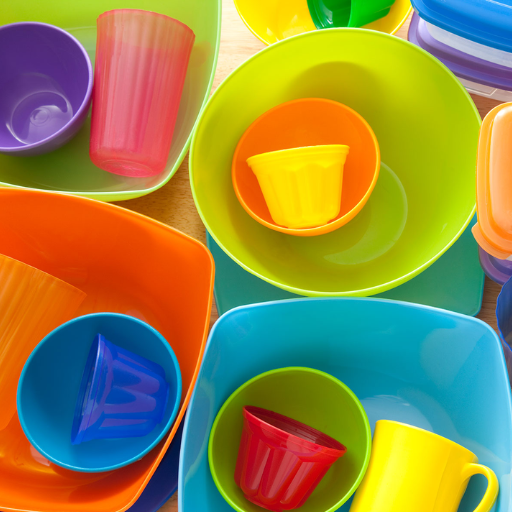
Plastics can be categorized into several types based on their chemical composition and properties, each serving unique purposes:
Polyethylene Terephthalate (PET) – Commonly used in water bottles and food containers due to its lightweight and strong nature. It is also highly recyclable.
High-Density Polyethylene (HDPE) – Known for its durability, HDPE is often found in milk jugs, detergent bottles, and piping.
Polyvinyl Chloride (PVC) – Frequently used in construction materials like pipes and window frames, as well as in medical supplies due to its versatility and chemical resistance.
Low-Density Polyethylene (LDPE) – Flexible and lightweight, LDPE is used in plastic bags, shrink wraps, and food packaging.
Polypropylene (PP) – Heat-resistant and durable, polypropylene is ideal for items such as yogurt containers, bottle caps, and automotive parts.
Polystyrene (PS) – Often found in disposable cups, food service containers, and packaging materials due to its lightweight and insulating properties.
Other Plastics – Includes polycarbonate, nylon, and biodegradable plastics, used in specialized applications such as eyewear lenses, textiles, and environmentally friendly products.
Understanding these types and their applications helps guide more effective recycling practices and encourages mindful consumption.
Exploring Polyethylene (PE) and Its Plastic Bags
Polyethylene (PE) is one of the most widely used plastics worldwide, known for its versatility, durability, and cost-effectiveness. It is a thermoplastic polymer derived primarily from ethylene, a byproduct of natural gas or crude oil refining. There are two main types of polyethylene that are primarily used to manufacture plastic bags:
High-Density Polyethylene (HDPE) – HDPE is sturdy, resistant to tears, and lightweight, making it ideal for grocery bags, trash liners, and merchandise bags. Its molecular structure provides higher strength, yet it uses less material, contributing to its efficiency.
Low-Density Polyethylene (LDPE) – LDPE has a softer, more flexible feel and is commonly used for produce bags, bread packaging, and zip-top bags. Its excellent moisture resistance and clarity make it particularly suitable for food preservation.
Plastic bags made from polyethylene are valued for their convenience and adaptability. However, they pose significant environmental challenges due to their persistence in ecosystems if not properly managed. Recycling initiatives and encouraging the use of biodegradable or reusable alternatives are crucial steps toward mitigating their environmental impact. Educating consumers and industries about the properties and sustainability of polyethylene can drive innovation in reducing plastic waste.
Understanding the Role of Polyvinyl Chloride (PVC) in Construction
Polyvinyl Chloride (PVC) plays a vital role in modern construction due to its durability, versatility, and cost-effectiveness. As one of the most widely used synthetic materials, PVC is employed in applications such as piping, window frames, flooring, and roofing membranes. Its resistance to weathering, corrosion, and fire makes it ideal for both indoor and outdoor use, especially in harsh environments. Additionally, PVC’s lightweight nature simplifies transportation and installation, contributing to time and cost savings for projects. Sustainability efforts are ongoing, with recycling programs and innovations in production reducing its environmental footprint, ensuring that PVC remains a key component in advancing sustainable construction practices.
The Versatility of Polyethylene Terephthalate (PET) in Packaging
Polyethylene Terephthalate, commonly known as PET, is a highly versatile material widely used in packaging due to its unique combination of properties. Renowned for its exceptional strength, lightweight nature, and transparency, PET is ideal for manufacturing bottles, food containers, and other packaging solutions. Its barrier properties effectively protect contents from moisture, gases, and contaminants, ensuring product integrity and extending shelf life.
Additionally, PET is 100% recyclable, contributing significantly to sustainability in the packaging industry. Advanced recycling technologies have enabled the production of high-quality PET from recycled materials, reducing environmental impact while supporting a circular economy. Its safety for food-contact applications and compatibility with a wide range of products—from beverages to pharmaceuticals—further highlights its adaptability and importance in meeting the demands of modern packaging.
How Does Plastic Recycling Work?
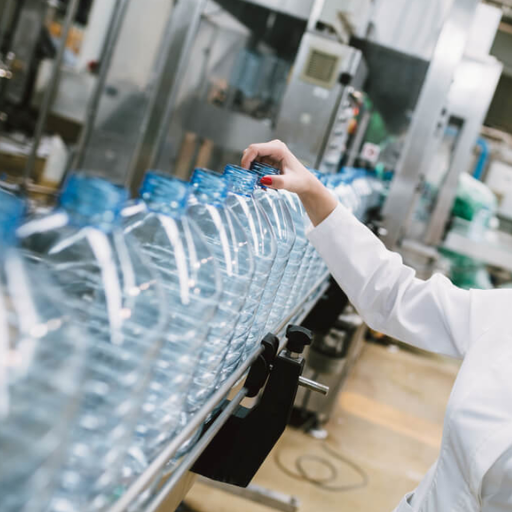
Plastic recycling works by collecting and sorting plastic waste based on its type and resin code. Once sorted, the plastic is cleaned to remove impurities like labels, dirt, and food residue. The cleaned plastic is then shredded into smaller pieces or pellets, which are either melted down and reformed into new products or further processed into raw materials for manufacturing. Advanced techniques, such as chemical recycling, break down plastics into their molecular components, allowing for higher-quality recyclables that can be reused multiple times, supporting a sustainable and circular economy.
The Importance of Recycling Plastic Waste
Addressing the issue of plastic waste pollution through recycling systems is critical for environmental sustainability. Each year, hundreds of thousands of plastic products are discarded in landfills and oceans, with subsequent breakdown or burning causing environmental harm. Recycling minimizes the consumption of newly produced plastic materials, making it possible to save natural reserves of fossil fuels and electricity.
In addition, well-managed recycling systems can greatly decrease litter, safeguard wildlife, and foster eco-friendly practices. Enhancing public participation in recycling programs is critical to maintain the sustainable use of plastics and eliminate pollution from the environment. Greater public understanding, reinforced policies, new advancements in recycling systems, and increasing efficiency in managing plastic wastes are global necessities. Attitudinal and structural changes that focus on recycling lead to a proactive approach towards plastic pollution control.
Challenges in Plastic Recycling and Solutions
The aspect that concerns me the most in plastic recycling is contamination. The presence of food remnants or non-recyclable materials within plastics greatly augments the costs associated with processing and reduces the quality of the products obtained after recycling. The diversity of plastics also presents obstacles in sorting, as some plastics are not recyclable due to their chemical constituents. The recycling infrastructure available in several other areas is inadequate, hindering communities’ attempts to effectively manage and control plastic waste.
To resolve these issues, in my opinion, emphasis should be added on educating the public. Encouraging a few simple steps such as rinsing and separating recyclables can go a long way in lowering contamination levels. Facilities can improve productivity and precision by investing in advanced sorting technologies, such as AI-driven systems. Furthermore, increasing public support towards the establishment of more recycling programs and facilities at a global level can help bridge infrastructure gaps. Emphasizing such strategies can help resolve a majority of the problems posed by plastic recycling and help achieve a sustainable future.
Innovations in Plastic Recycling Technology
Plastic recycling technologies have rapidly evolved to address the mounting global waste crisis. Among the leading innovations is chemical recycling, which breaks down plastics into their molecular components, enabling the production of materials with virtually no quality degradation. Techniques like pyrolysis and depolymerization are at the forefront of this trend, offering the potential to recycle previously non-recyclable plastics.
Another breakthrough lies in enzymatic recycling, where engineered enzymes efficiently decompose plastics like PET into their raw constituents for reuse. This method, which works under milder conditions compared to traditional processes, demonstrates enormous potential for scalability and environmental benefits.
Finally, AI-driven sorting systems are revolutionizing material recovery facilities by using advanced sensors and machine learning to precisely identify and separate plastic types, increasing recycling purity and efficiency. Combined with a surge in global collaboration to develop affordable and accessible recycling infrastructure, these innovations represent a powerful step toward a circular economy for plastic materials.
What Is the Difference Between Synthetic Plastic and Natural Materials?
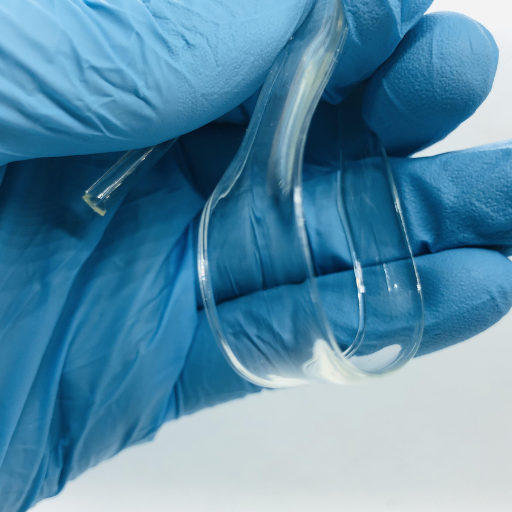
Synthetic plastic and natural materials differ fundamentally in their origins and properties. Synthetic plastics are man-made, primarily derived from fossil fuels such as petroleum or natural gas, through a series of chemical processes. They are engineered to be durable, lightweight, and versatile but are often non-biodegradable, posing environmental challenges. Natural materials, on the other hand, are sourced directly from the environment, including wood, cotton, wool, or plant-based polymers like natural rubber. These materials are generally biodegradable and renewable, making them more eco-friendly but sometimes less durable or resistant compared to synthetic plastics. The distinction lies in their composition, environmental impact, and suitability for various applications.
Comparing Polymer Chains in Synthetic Plastic vs. Natural Materials
When comparing polymer chains in synthetic plastics and natural materials, the difference lies in their structure and origin. Synthetic plastics are made up of long, repeating chains of identical monomers, which are typically derived from fossil fuels. These chains are engineered to provide properties like flexibility, strength, and durability, often making them non-biodegradable. On the other hand, natural materials feature polymer chains such as cellulose, proteins, or natural rubber that originate from renewable sources like plants or animals. These chains are more complex and can vary in composition, allowing for biodegradability and natural recycling within ecosystems, though they may lack the uniformity and resilience of synthetic alternatives.
Environmental Impact of Synthetic Plastic vs. Natural Materials
The environmental impact of synthetic plastics and natural materials is marked by significant contrasts. Synthetic plastics are predominantly derived from non-renewable fossil fuels, contributing to greenhouse gas emissions both during production and disposal. They accumulate in ecosystems due to their non-biodegradable nature, persisting for decades and causing widespread pollution in oceans and on land. Additionally, their degradation into microplastics poses risks to wildlife and human health through bioaccumulation.
Conversely, natural materials are typically biodegradable and come from renewable sources such as plants, animals, or bacteria. Their decomposition integrates back into ecosystems without leaving harmful residues, reducing long-term pollution risks. However, the cultivation and harvesting of natural materials, particularly on a large scale, can also lead to environmental challenges, such as deforestation, water overuse, and habitat loss if not managed sustainably. Striking a balance between innovation and environmental conservation is essential in reducing the cumulative impact of both synthetic and natural materials.
Applications of Synthetic vs. Natural Plastic
When considering synthetic and natural plastics, their applications depend largely on their properties and intended uses. Synthetic plastics, derived from petroleum, are widely utilized in industries due to their durability, adaptability, and cost-effectiveness. They are commonly found in packaging, construction materials, automotive components, and electronic devices due to their resistance to wear and flexibility in design.
On the other hand, natural plastics, such as bioplastics made from plant-based sources like corn starch or sugarcane, are increasingly being used in applications where environmental sustainability is a priority. For example, they are commonly used in biodegradable packaging, disposable cutlery, and even medical solutions such as sutures and drug capsules. While natural plastics are an eco-friendlier option, their current limitations in performance and higher production costs can make them less suitable for applications requiring robust durability or high heat resistance.
Both types play crucial roles in modern industry, but the key is aligning the material choice with both functionality and environmental considerations to drive sustainable progress.
What Are the Environmental Impacts of Plastic?
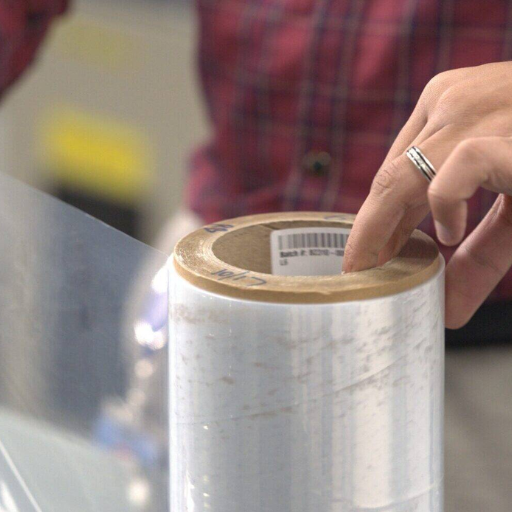
Plastics significantly impact the environment, primarily due to their non-biodegradable nature and widespread use. Improper disposal leads to pollution in ecosystems, with plastic waste building up in landfills, oceans, and waterways. Marine life is particularly vulnerable, as animals can ingest or become entangled in plastic debris, leading to injury or death. Additionally, the production of plastics relies heavily on fossil fuels, contributing to greenhouse gas emissions and climate change. Microplastics, tiny plastic particles resulting from the breakdown of larger pieces, further contaminate food chains and water supplies, posing risks to both human and environmental health. Addressing these challenges requires global efforts in reducing plastic use, improving recycling processes, and developing sustainable alternatives.
Confronting Plastic Pollution and Its Global Effects
Reduce Plastic Consumption
Reducing dependence on single-use plastics is one of the most effective ways to tackle plastic pollution. Transitioning to reusable materials such as cloth bags, stainless steel bottles, and biodegradable packaging can significantly decrease plastic waste. Governments and organizations can play a crucial role by introducing policies that ban or limit single-use plastics.
Enhance Recycling Systems
Improving and expanding recycling infrastructure is critical to managing existing plastic waste. Innovations in recycling technology, including chemical recycling and advanced sorting systems, can increase the efficiency of plastic reuse. Public awareness campaigns can also educate communities on proper recycling practices.
Promote Alternative Materials
The development and adoption of sustainable alternatives, such as bioplastics and plant-based materials, show promise in reducing plastic dependency. These innovations can replace plastics in industries like packaging, construction, and consumer goods, minimizing the environmental footprint.
Support Cleanup Efforts
Global cleanup initiatives, such as beach cleanups and river restoration projects, help remove existing plastic waste from natural environments. Organizations, volunteers, and governments can collaborate to address the problem directly while raising awareness about the broader impact of pollution.
Increase Global Collaboration
Tackling plastic pollution demands global cooperation through international agreements and partnerships. Initiatives like the United Nations’ efforts to negotiate a global plastics treaty highlight the importance of unified action. Sharing research, resources, and strategies accelerates progress while ensuring accountability.
By focusing on these combined efforts, society can work toward reducing the overwhelming impact of plastic pollution and preserving the environment for future generations.
Strategies for Reducing Plastic Waste
Adopt Reusable Alternatives
A primary way to tackle plastic waste is by replacing single-use plastics with durable, reusable alternatives. This includes using cloth bags instead of plastic shopping bags, stainless steel or glass bottles over disposable ones, and reusable utensils and straws. These small shifts drastically lower the demand for disposable plastics.
Enhance Recycling Systems
Strengthening recycling infrastructure is pivotal. Encouraging proper segregation of waste, investing in advanced recycling technologies, and educating the public about what materials can be recycled will increase recycling rates and reduce the amount of plastic waste in landfills.
Support Plastic-Free Packaging
Consumers and businesses can advocate for plastic-free or minimal-packaging options. Choosing items with compostable materials or supporting brands that prioritize sustainable packaging design reduces the reliance on traditional plastics in everyday products.
Legislation and Policy Changes
Governments play a crucial role in reducing plastic waste through policies like banning single-use plastics, implementing plastic taxes, or establishing extended producer responsibility (EPR) programs. These initiatives encourage both manufacturers and consumers to act more sustainably.
Community Awareness and Action
Grassroots movements and educational campaigns are essential to engaging individuals and communities. Promoting beach cleanups, workshops on reducing plastic use, and highlighting the life cycle of plastic waste motivates collective action toward a cleaner environment.
By integrating these strategies on individual, corporate, and governmental levels, it’s possible to make substantial progress in addressing the plastic waste crisis.
Future of Plastic Production and Sustainability
From my perspective, the future of plastic production hinges on innovation and responsibility. Companies must prioritize the development of biodegradable or compostable plastics while investing in chemical recycling technologies that can efficiently break plastic down for reuse. Governments play a pivotal role in setting regulations to limit single-use plastics and incentivize the adoption of sustainable alternatives. On an individual level, reducing reliance on plastic products and supporting eco-friendly businesses are critical steps toward sustainability. By combining advances in science with global policy changes and community action, we can redefine the way plastics are produced and consumed, paving the way for a more sustainable future.
References
Frequently Asked Questions (FAQ)
Q: What are plastics made of?
A: Plastics are made up of organic polymers, primarily composed of chains of carbon and hydrogen atoms, which are derived from the distillation of crude oil and natural gas.
Q: How are polypropylene and other plastics produced?
A: Polypropylene and other types of plastic are produced by polymerizing monomers, which are small molecules, into long chains known as polymers. This process often involves the use of plastic pellets, which are melted and molded into various forms.
Q: What role do carbon and hydrogen play in the composition of plastics?
A: Carbon and hydrogen are essential components of plastics, as they form the backbone of the polymer chains. These atoms are linked together to create the flexible and durable structures that define different plastic materials.
Q: How do the various types of plastic differ from each other?
A: Different types of plastic differ in their chemical structure, properties, and applications. For instance, polycarbonate plastic is known for its strength and transparency, while other forms of plastic may be more flexible or resistant to heat.
Q: What is the significance of the word plastic in the context of these materials?
A: The word plastic refers to the malleability and ability of these materials to be molded into various shapes. This property is due to the flexible nature of the polymer chains that make up plastics.
Q: How has global plastic production evolved over time?
A: Global plastic production has significantly increased since the first synthetic plastic, Bakelite, was introduced. Today, new plastic materials continue to be developed to meet diverse industrial and consumer needs.
Q: In what ways is used plastic recycled or reused?
A: Used plastic can be recycled through processes that break down the material into plastic pellets, which can then be used to produce new plastic products. This helps reduce waste and the demand for raw materials.
Q: What are some common applications of transparent plastic?
A: Transparent plastics, such as polycarbonate plastic, are commonly used in applications requiring clarity and strength, including eyewear lenses, protective barriers, and electronic device screens.
Q: How does polymer vs plastic compare?
A: Polymer refers to the large, chain-like molecules that form the basis of plastics, while plastic is the end product made from these polymers. Plastics are polymers that have been processed and shaped for specific uses.
Q: What is the relationship between oil and gas and plastic production?
A: Oil and gas are crucial resources in plastic production, as they provide the raw materials for creating monomers. These monomers are polymerized to form the various types of plastic used in everyday products.

